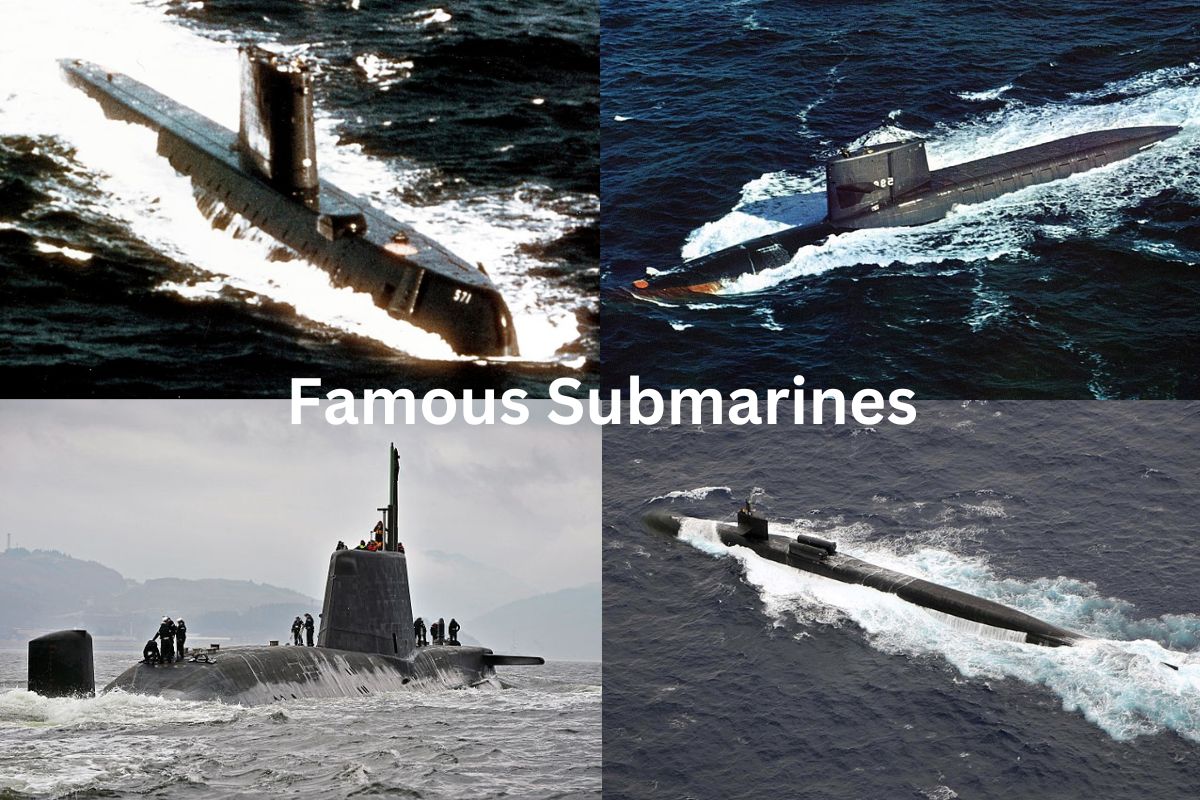Submarines serve an important role in modern naval warfare, acting as clandestine weapons platforms for intelligence gathering, attack, and defense.
Several submarines have acquired recognition over the years, whether by technological innovations, famous missions, or tragic finishes.
Some of the most famous submarines in history include the USS Nautilus, the world’s first nuclear-powered submarine, the HMS Conqueror, which sank the Argentine cruiser General Belgrano during the Falklands War, and the Kursk, a Soviet submarine that sank in 2000 with the loss of all crew.
The USS Ohio, the backbone of the US Navy’s nuclear deterrence, and the INS Arihant, India’s first nuclear-powered ballistic missile submarine, are two more significant submarines.
Famous submarines’ legacies continue to affect the history of naval warfare, from Cold War-era submarines to cutting-edge current vessels.
Famous Submarines
1. USS Nautilus (SSN-571)
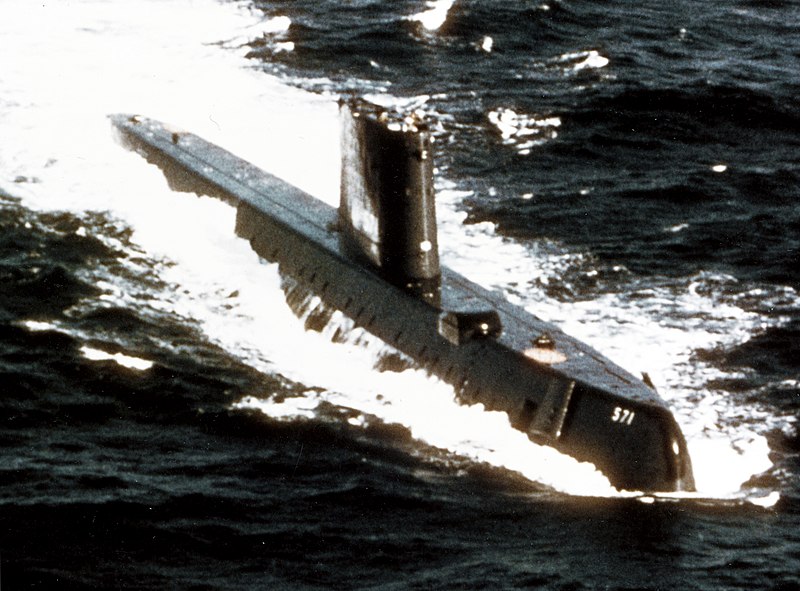
The USS Nautilus was the world’s first nuclear-powered submarine, and it was essential in the development of submarine technology throughout the Cold War.
The Nautilus, which was launched in 1954, was propelled by a pressurized-water nuclear reactor, which provided it with remarkable range and speed.
The Nautilus became the first submarine to complete a submerged transit of the North Pole in 1958, traveling 1,830 nautical miles beneath the ice in less than four days.
The submarine also helped to enhance undersea navigation and communication technologies, and it took part in a number of crucial Cold War operations.
In 1980, the Nautilus was decommissioned and turned into a museum ship in Groton, Connecticut. Visitors to the ship can now take a tour and learn about its history and contributions to submarine technology.
During the Cold War, the USS Nautilus served as a symbol of the US Navy’s ingenuity and scientific progress.
2. HMS Dreadnought (S101)
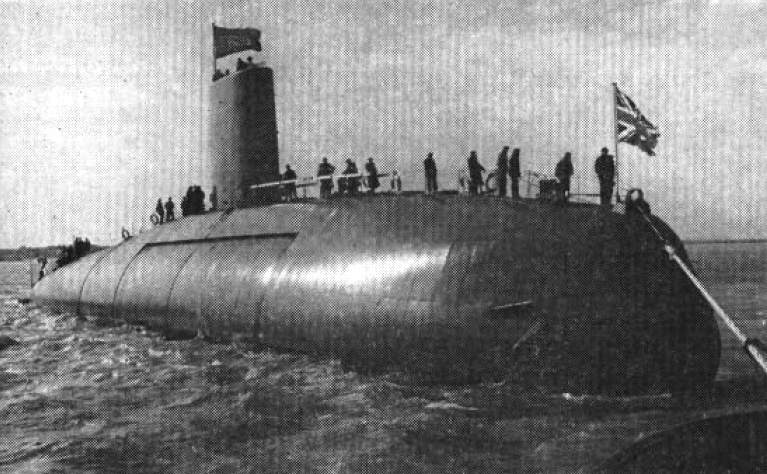
HMS Dreadnought (S101) is a Royal Navy nuclear-powered submarine that was commissioned in 2010. It is the flagship of the Astute class, the Royal Navy’s most recent attack submarine class.
The submarine is named after the legendary battleship HMS Dreadnought, which debuted in 1906 and revolutionized naval combat with her all-big-gun armament. The submarine HMS Dreadnought, like her namesake, marks a substantial leap in submarine technology and capabilities.
The Astute class submarines are meant to operate anywhere in the world and are outfitted with cutting-edge technology such as sonar systems, torpedoes, and Tomahawk land-attack cruise missiles.
The submarines also include an air-independent propulsion system, allowing them to stay below for longer periods of time without having to surface or snorkel.
HMS Dreadnought can stay submerged for up to three months and has a crew of roughly 100 people. The submarine can conduct covert operations in both shallow and deep waters and can deploy special forces units.
Overall, the submarine is an important part of the United Kingdom’s naval defense capabilities, and it is likely to serve in the Royal Navy for many years to come.
3. USS Scorpion (SSN-589)
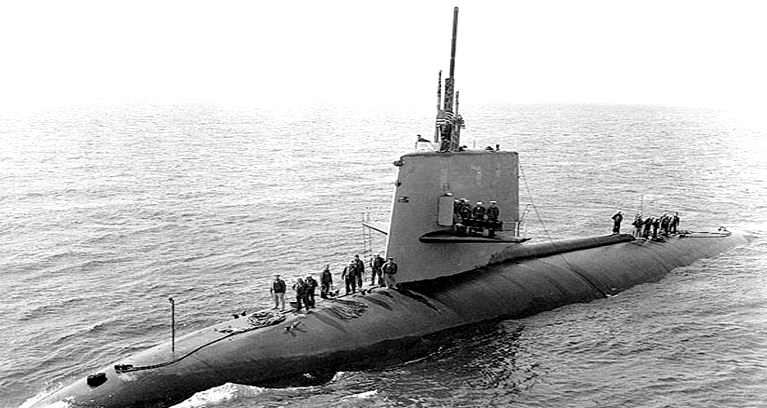
The USS Scorpion (SSN-589) was a United States Navy nuclear-powered submarine that was lost at sea in 1968. It was a Skipjack-class submarine that was commissioned in 1960 and was one of the most technologically advanced submarines at the time.
The USS Scorpion went missing while on a mission in the Atlantic Ocean on May 21, 1968. The cause of the submarine’s and its 99 crew members’ loss is still unclear, and it is regarded as one of the greatest submarine mysteries in US Navy history.
In October 1968, the wreckage of the USS Scorpion was discovered on the ocean below 400 miles southwest of the Azores after an exhaustive search. Unfortunately, the precise cause of the submarine’s sinking is unknown.
Many explanations have been advanced throughout the years, including an unintentional torpedo explosion, a nuclear reactor breakdown, or a collision with a Soviet submarine.
The loss of the USS Scorpion was a huge setback for the US Navy, prompting modifications in submarine safety procedures and design enhancements.
Notwithstanding the tragedy, the USS Scorpion is an essential part of submarine history, and its legacy lives on via the advancement of advanced submarine technology and safety protocols.
4. Kursk (K-141)
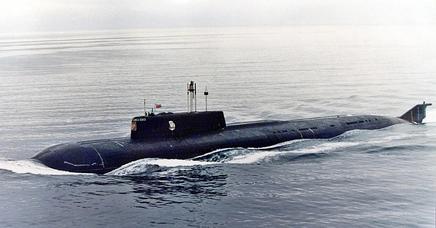
The Kursk (K-141) was a Russian nuclear-powered Oscar-II class submarine that sank in the Barents Sea on August 12, 2000, killing all 118 crew members on board. The incident is considered one of the worst submarine disasters in history.
The Kursk was on a training exercise when a torpedo explosion occurred, causing the submarine to sink to the ocean floor. The Russian Navy was slow to respond to the incident, and it was several days before they could locate the submarine and attempt a rescue operation.
However, all crew members had perished in the explosion or the subsequent flooding of the submarine.
The cause of the explosion was later determined to be a faulty torpedo, which detonated inside the submarine’s torpedo room. The Russian government was heavily criticized for their handling of the incident, particularly for their slow response and lack of transparency with the families of the crew members.
The sinking of the Kursk led to renewed interest in submarine safety and rescue operations. It also highlighted the dangers of operating submarines in deep waters and the need for proper training and maintenance.
Today, the Kursk remains a tragic reminder of the dangers of submarine operations and a symbol of the importance of ensuring the safety and well-being of submarine crews.
5. USS Ohio (SSBN-726)
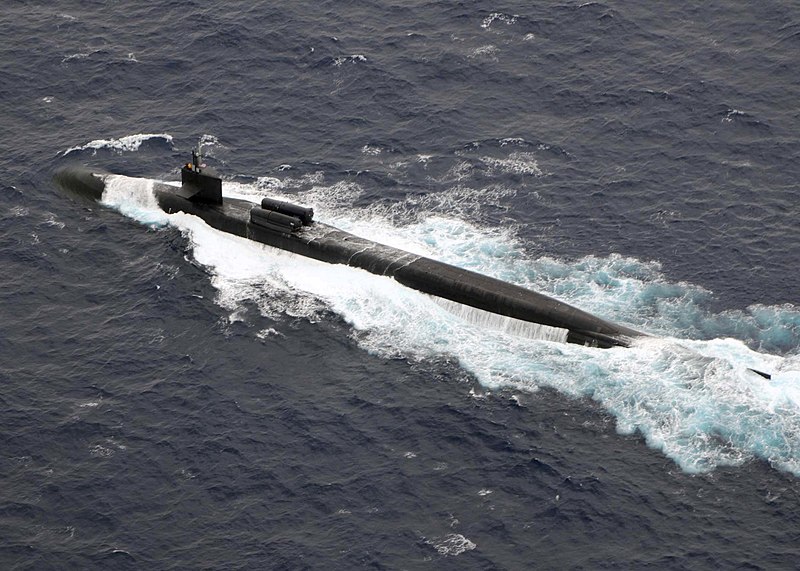
The USS Ohio (SSBN-726) is a ballistic missile submarine of the United States Navy and the lead boat of the Ohio class. The Ohio class submarines are the backbone of the US Navy’s nuclear deterrent and are designed to launch nuclear missiles from beneath the surface of the ocean.
The USS Ohio was commissioned in 1981 and was the first of 18 Ohio class submarines built. The submarine is over 560 feet long and can remain submerged for up to three months at a time.
It is equipped with 24 Trident II D5 ballistic missiles, which are capable of delivering multiple nuclear warheads to targets over 4,000 nautical miles away.
The Ohio class submarines are also equipped with advanced sonar systems and torpedoes for self-defense. The submarines can operate in both deep and shallow waters and are designed to remain undetected while on patrol.
The USS Ohio and the other Ohio class submarines represent a critical component of the US nuclear deterrent and serve as a powerful symbol of US military power. They are regularly deployed around the world and provide the US with the ability to respond to threats quickly and effectively.
6. HMS Conqueror (S48)
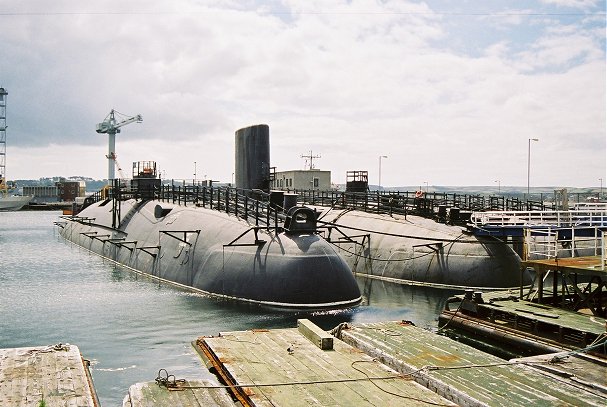
HMS Conqueror (S48) was a British submarine that gained fame for sinking the Argentine cruiser General Belgrano during the Falklands War in 1982. It was a Churchill-class submarine, commissioned in 1971, and was one of the most advanced submarines in the Royal Navy at the time.
During the Falklands War, the General Belgrano was considered a threat to British naval forces, and the decision was made to sink it. On May 2, 1982, the HMS Conqueror fired three torpedoes at the General Belgrano, causing it to sink and resulting in the loss of over 320 Argentine sailors.
The sinking of the General Belgrano was controversial, and the Argentine government condemned it as an act of aggression. However, the British government defended the action, stating that the General Belgrano was a legitimate military target.
After the Falklands War, the HMS Conqueror continued to serve in the Royal Navy until it was decommissioned in 1990. It was scrapped in 2010, but its legacy lives on as one of the most famous submarines in British naval history.
The sinking of the General Belgrano remains a subject of debate and controversy, and the incident continues to shape perceptions of submarine warfare and military conflict.
7. USS Thresher (SSN-593)
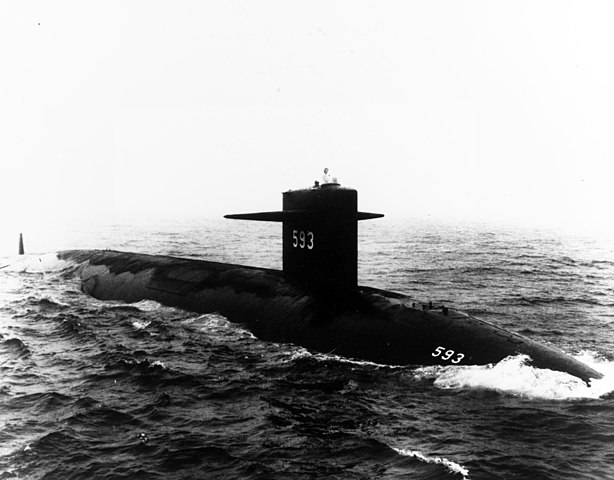
The USS Thresher (SSN-593) was a United States Navy nuclear-powered submarine that was lost at sea in 1963. It was the flagship of the Thresher class, which was intended to be the most technologically advanced submarine in the world at the time.
The USS Thresher was on a test dive off the coast of Massachusetts on April 10, 1963, when it suffered a catastrophic mechanical breakdown and lost contact with the surface. The tragedy killed all 129 crew members on board, making it one of the deadliest submarine catastrophes in history.
The actual cause of the submarine’s demise is unknown, but it is thought to have been caused by a malfunction of its nuclear reactor or propulsion system.
The sinking of the USS Thresher prompted a thorough examination of US Navy submarine safety procedures and design enhancements to avoid such mishaps in the future.
The loss of the USS Thresher was a major setback for the American Navy and military. It emphasized the perils of submarine operations and the significance of ensuring submarine crew safety.
The catastrophe also prompted further research and development into submarine technology and safety standards in order to avoid similar tragedies in the future.
8. USS George Washington (SSBN-598)
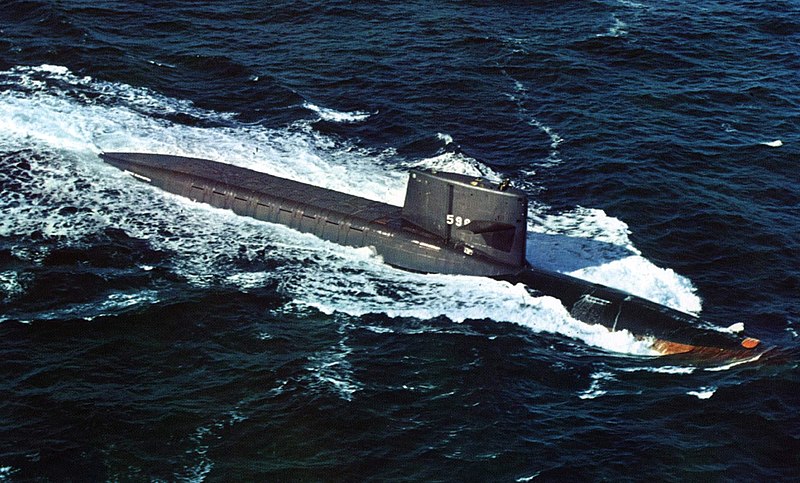
The USS George Washington (SSBN-598) was the first ballistic missile submarine of the United States Navy. It was commissioned in 1959 and served until 1985, playing a critical role in the US nuclear deterrence strategy during the Cold War.
The USS George Washington was over 350 feet long and could remain submerged for up to 60 days at a time. It was equipped with 16 Polaris A1 missiles, which were capable of delivering nuclear warheads to targets up to 1,000 nautical miles away.
The Polaris missiles were a significant advancement in submarine-launched ballistic missile technology and allowed the US to maintain a credible nuclear deterrent without relying on bombers or land-based missiles. The USS George Washington and the other Polaris submarines played a critical role in deterring Soviet aggression during the Cold War.
After its retirement in 1985, the USS George Washington was decommissioned and its nuclear reactor was removed. It is now on display at the Submarine Force Library and Museum in Groton, Connecticut, where it serves as a reminder of the critical role that submarines played in US military strategy during the Cold War.
9. INS Arihant (S73)

The Indian Navy’s first nuclear-powered ballistic missile submarine, INS Arihant (S73), was commissioned in 2016. It is part of India’s nuclear triad, which includes nuclear delivery systems on land, air, and sea. INS Arihant is the flagship of the Arihant class of submarines, India’s first indigenous nuclear submarine program.
The submarine is more than 360 feet long and can stay submerged for lengthy periods of time. It is armed with 12 K-15 ballistic missiles capable of delivering nuclear warheads to targets more than 700 kilometers away. INS Arihant is meant to operate quietly and invisibly when on patrol.
The development and commissioning of INS Arihant marked an important milestone in India’s defense capabilities, providing the country with credible nuclear deterrence capacity and increasing strategic depth. It was also a notable technological triumph for India, which had previously relied on foreign sources for its submarine fleet.
The INS Arihant and the Arihant class submarines represent a substantial advancement in India’s military capabilities, and the program is likely to expand further in the following years. It emphasizes India’s developing regional power status and commitment to retaining a credible nuclear deterrence capability.
10. HMS Astute (S119)
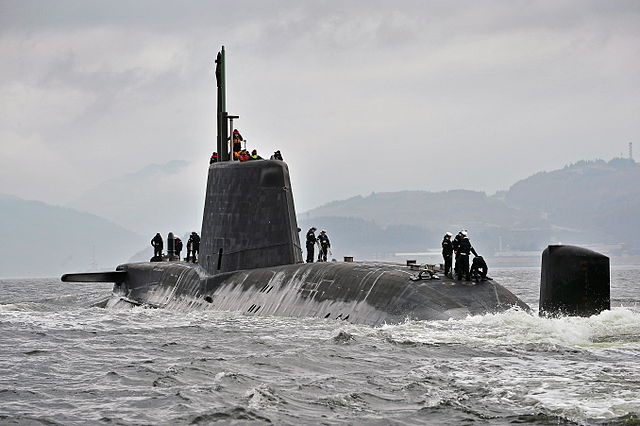
HMS Astute (S119) is a nuclear-powered submarine of the Royal Navy, commissioned in 2010. It is the lead boat of the Astute class, which is the latest class of attack submarines in the Royal Navy.
The Astute class submarines are designed to operate in all areas of the world and are equipped with a range of advanced technologies, including sonar systems, torpedoes, and Tomahawk land-attack cruise missiles.
The submarines also feature an air-independent propulsion system, which allows them to remain submerged for longer periods without the need to surface or snorkel.
HMS Astute is over 318 feet long and has a crew of around 100. It is capable of remaining submerged for up to three months at a time and can operate in both shallow and deep waters. The submarine is also capable of deploying special forces teams for covert operations.
HMS Astute and the other Astute class submarines represent a significant step forward in submarine technology and capabilities. They are the most advanced submarines in the Royal Navy and are capable of carrying out a wide range of missions, from intelligence gathering to attack and defense.
Overall, HMS Astute is a critical component of the UK’s naval defense capabilities and is expected to serve in the Royal Navy for many years to come.
